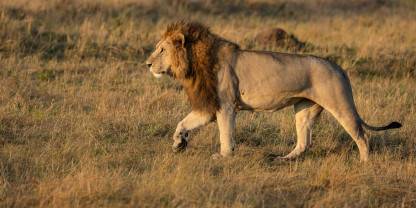Average Expert Rating
Rating Breakdown
Write a User ReviewMigration Madness in the Mara
But there’s much more to the Mara than the migration. Its sweeping plains are home to masses of animals that include the Big Five, although rhino are quite difficult to find, and its birdlife is tremendous. Unsurprisingly, it attracts masses of tourists too, catering for all budgets,
Read more
so if you want to avoid the crowds, steer clear of the high season.Another tip for avoiding the crowds is to stay in one of the conservancies bordering the park. These are owned by local Maasai who benefit from leasing the land to just a few lodge owners. It’s a complete win-win situation – with only a handful of lodges on each conservancy, visitors get a great place to stay with few other tourists; the wildlife has returned to what was once deserted land due to overgrazing by cattle; and the Maasai get a welcome and not insubstantial income. I stayed at Naboisho Conservancy and was blown away by the amount of game on the plains.
Life and Death in the Masai Mara
I once had a leopard use my vehicle as cover while stalking its prey, and I’ve seen cheetahs, typically perched atop termite mounds to scan the horizon for gazelles, opting to sit on a car bonnet instead. Lions frequently engage in hunts or are found feasting on their kills, which inevitably attract a host of scavengers. Hyenas and vultures are usually the first to arrive on the scene, with jackals never far behind. This dramatic interplay of
Read more
life and death occurs year-round, but the most spectacular events take place from July to October, when the wildebeest migration arrives from the Serengeti. During this time, predators – especially opportunistic lions – are even more prevalent, and Nile crocodiles seize their chance during the famous river crossings. The Masai Mara is undeniably a place to appreciate the relentless cycle of nature.A Timeless Safari Experience With a Full Complement of African Animals
Read more
ranges from large family-friendly lodges in the reserve, super-luxurious and intimate camps in one of the conservancies or group ranches, to budget banda/tented accommodation outside Talek, Sekenani and Ololaimutiek gates. But whatever your safari arrangements are for the Masai Mara, you can be sure of plenty of dazzling animal action.Superb Wildlife, but Way Too Many People
Known for its prolific big cats and the dramatic great migration river crossings, the Masai Mara is probably one of the most famous wildlife destinations on the planet – and it shows. The national reserve is suffering a bad case of overtourism, with far too many vehicles hemming in the wildlife at any given sighting. There are some camps that have made it their policy to avoid the crowds – these places usually employ the best guides who can find their own sightings without relying on the radio that’s used to share wildlife findings. Do your research before booking, as a guide can make or break your stay in the Mara. Alternatively, the surrounding Mara conservancies, which are private, offer the best experience. Within the national reserve, Enaidura Camp is good, and I would also recommend the camps run by Asilia in the Naboisho Conservancy.
Where Culture Meets Nature
My first safari experience was a tough act to follow. By day we spotted lions sheltering in emerald-green foliage and spent hours photographing a leopard napping next to the kill it had hoisted into a tree. By night, we were treated to a little Masai culture, with folklore tales and after-dinner dance performances. The Masai Mara is deservedly popular, with its range of accommodation to suit all budgets, its elegant and striking Masai people who sometimes work as guides and its plethora of animals that includes the Big Five and practically every other species you're likely to have on your checklist.
Avoid the Masses
Due to mounting criticism and negative publicity, there does seem to be an increasing effort by key Mara stakeholders to improve the management of the park. When we visited the national reserve most recently, there appeared to be more
Read more
rangers monitoring tourist vehicles at the wildebeest crossings. However, having said that, if you want to go to the Masai Mara, consider travelling during low season and/or staying at one of the private conservancies that border the national reserve. These are owned by the local Maasai communities and have good populations of wildlife, but far fewer lodges and tourist vehicles.Unadulterated Drama
From one perspective, I am privileged to be an onlooker at one of the most iconic wildlife events the world has ever known. But on the other hand, it can be brutal. Not only do many of the wildebeest end up being converted into crocodile poo, they also have a tendency to crush and injure one another in the frenetic stampede to get across to the other side. It’s pure drama: violent, magnificent, heart-wrenching, and never to be forgotten.
However, the Mara is so much more than just the mayhem of the crossings. The big five are generally a guarantee (with the exception of rhinos, which are scarce), elephants are two a penny, and the sight of rolling
Read more
plains literally festooned in millions of wildebeest can sometimes overload the senses. Expect to see, well, pretty much everything.You’ll also likely see lots of tourists and minibus safari cars (especially around predator sightings), but for a price, it’s possible to escape the maddening crowds by staying in one of the many luxury lodges situated in private conservancies bordering the main park.

